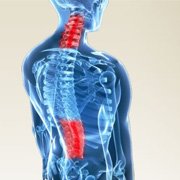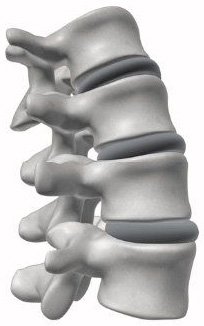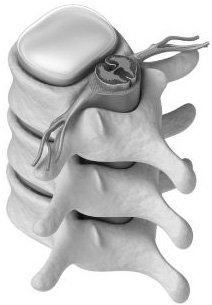
To learn more about Herniated Disc and how to get rid of this annoying back pain Click Here.
The Anatomy of Spine

The block portion of the bones is known as the vertebral body. This is the front half of the bony portion of the spine. 
The discs of the spine are circular when viewed from above. They are similar to a jelly-filled doughnut. There is a firm, but slightly flexible, outer ring that is tough and strong. The middle of the disc is soft and squishy, like jelly. When pressure is applied to a normal, healthy disc the pressure in the central jelly portion increases and the firm outer ring is stressed but contains the inner contents.
There is no Extra Room in Spinal Canal…
As mentioned earlier, the spinal cord runs behind the column of vertebral bodies and discs, in the spinal canal. The bony walls surrounding the spinal cord provide protection from injury but also contribute to one of the problems caused by a herniated disc. This bony perimeter around the nerves does not offer much additional space. If things start to get crowded in the spinal canal, there is no extra room. At each disc level there is an opening between the different pieces of bone. This opening is known as a spinal foramen. The individual nerves that make up the spinal canal exit the spinal canal through these spinal foramen. Like the spinal canal, the spinal foramen is surrounding on all sides by bones, so there is no extra space and no ability to stretch or expand.
A sudden load applied to the disc may generate enough pressure within the disc to tear or rupture the outer ring. This can happen from a fall, a motor vehicle accident, or lifting a heavy object. This tear in the outer ring is often painful. The secondary problem that can develop, however, is that the disruption in this outer ring may allow the inner, jelly-like contents to escape. Depending on the location of the tear and the nearby structures, this escaping material can lead to additional problems.
To learn more about Herniated Disc and how to get rid of this annoying back pain Click Here.
Leave A Comment